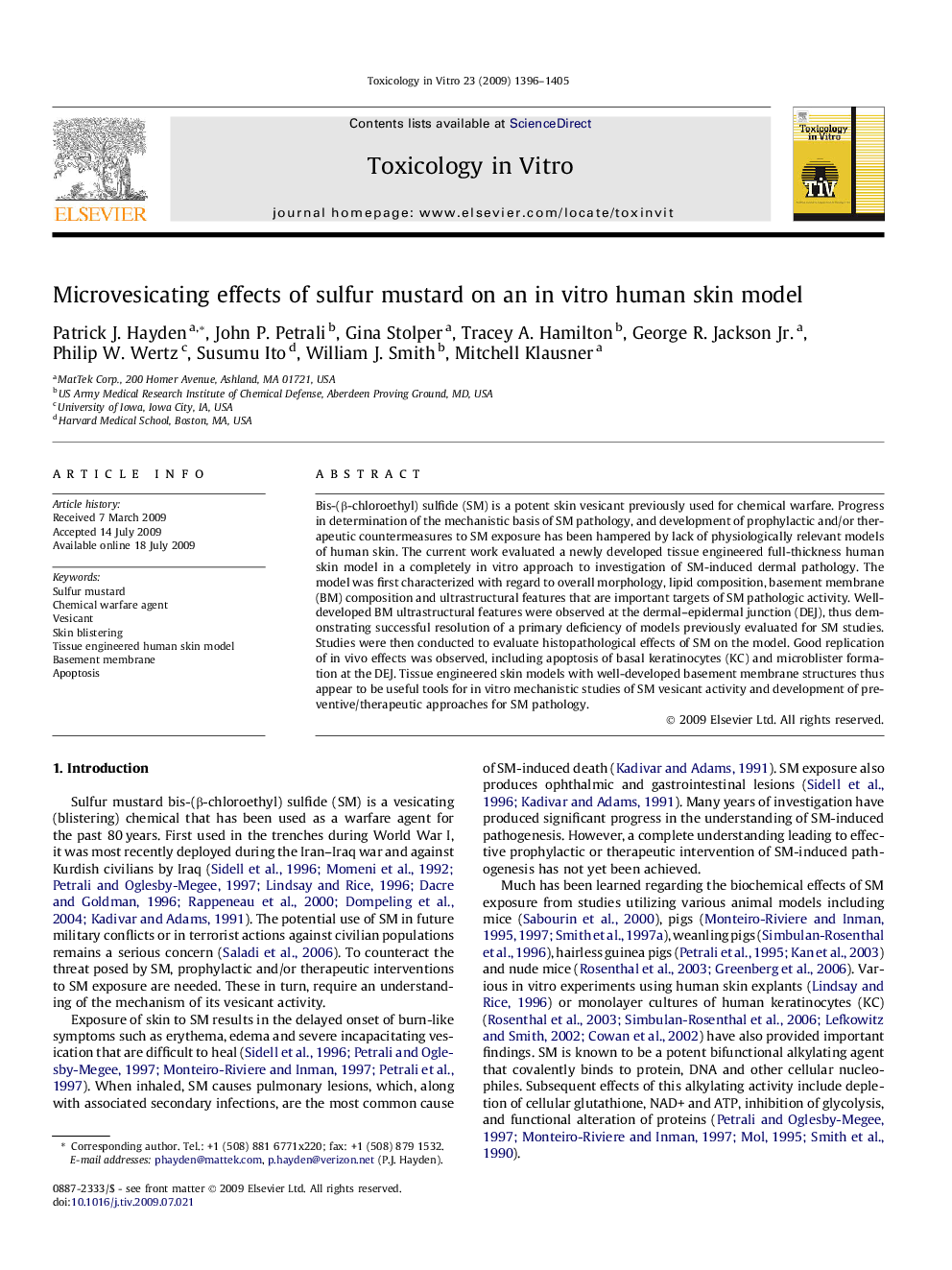| Article ID | Journal | Published Year | Pages | File Type |
|---|---|---|---|---|
| 2602727 | Toxicology in Vitro | 2009 | 10 Pages |
Bis-(β-chloroethyl) sulfide (SM) is a potent skin vesicant previously used for chemical warfare. Progress in determination of the mechanistic basis of SM pathology, and development of prophylactic and/or therapeutic countermeasures to SM exposure has been hampered by lack of physiologically relevant models of human skin. The current work evaluated a newly developed tissue engineered full-thickness human skin model in a completely in vitro approach to investigation of SM-induced dermal pathology. The model was first characterized with regard to overall morphology, lipid composition, basement membrane (BM) composition and ultrastructural features that are important targets of SM pathologic activity. Well-developed BM ultrastructural features were observed at the dermal–epidermal junction (DEJ), thus demonstrating successful resolution of a primary deficiency of models previously evaluated for SM studies. Studies were then conducted to evaluate histopathological effects of SM on the model. Good replication of in vivo effects was observed, including apoptosis of basal keratinocytes (KC) and microblister formation at the DEJ. Tissue engineered skin models with well-developed basement membrane structures thus appear to be useful tools for in vitro mechanistic studies of SM vesicant activity and development of preventive/therapeutic approaches for SM pathology.
